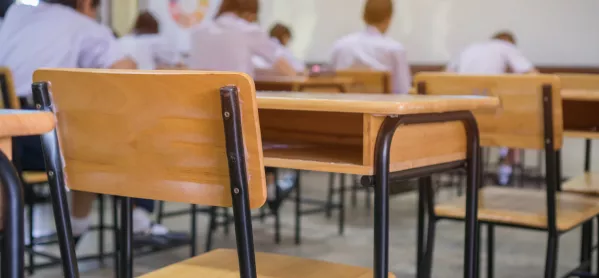- Home
- ‘The case for schools reopening is yet to be made’
‘The case for schools reopening is yet to be made’

The government has said that it wants a greater number of children to return to school because “the scientific evidence says it will be safe to do so”, but both parents and the profession are finding this hard to swallow.
Numerous surveys over recent weeks have all pointed to the same fact - that the vast majority of parents do not yet believe that a return to school is safe.
In a snap-poll of school leaders, taken by NAHT last week, 90 per cent of those who responded told us that they did not feel confident that it would be safe to open their schools in the coming weeks. The government’s 50-page recovery strategy, published today, does little to remedy this.
In short, the case for school return has yet to be made, let alone believed.
Coronavirus: Is it safe to reopen schools?
One such caveat to schools being safe to reopen - and a major one at that - is the government’s insistence that we must maintain social distancing measures.
While social distancing advice remains unchanged - that we should endeavour to maintain two-metre distance between each other - reopening schools beyond a relatively small percentage of pupils will be a physical impossibility.
However, the government has said that Reception, Year 1 and Year 6 should be within the first wave of reopening, and it hopes that, somehow, all primary pupils will return for a month before the end of the summer term.
As well as suggesting a worrying lack of understanding of the impossibility of keeping youngest children apart, this is a failure of basic mathematics.
Maintaining social distancing of two metres will require limits on class sizes of around 10 to 12 children in a typical-sized classroom. This would mean most classes needing to be split in three. For every class, we will need three classrooms and three teachers.
It is highly unlikely that many schools in the country will have the physical space, let alone the staff, to accommodate a return of three year groups spread out in this way.
If you need to treble the space and staff available to accommodate current social distancing rules then the most pupils you can return, in the best possible circumstances, with a full complement of staff and no other demands on teachers’ time, is a third, not three-sevenths (for primaries) or two-thirds (for infants).
Making a bad situation worse
And to make matters worse, these are far from being the best possible circumstances:
- As well as bringing classes back, schools will be expected to remain open too for children of key workers and vulnerable pupils from outside of these year groups, and while this number is small, it is expected to increase. Indeed, in the government’s recovery strategy it urges “more children [from these groups] who would benefit from attending in person to do so”.
- Most children identified as vulnerable are not attending school. But we know from surveys of schools the extraordinary lengths that they are going to, to engage vulnerable children and their families and support disadvantaged pupils at home
- The vast majority of schools are providing extensive home learning support, with most - at primary and secondary level - setting work daily and providing regular feedback and engagement for all pupils. Teachers are working full-time - and more - in an attempt to keep all the plates spinning.
We cannot ignore the fact that even in the highly unlikely scenario that three-sevenths of pupils can return on 1 June, four-sevenths of children remain at home.
This has to be factored into calculations of what is possible and desirable.
School leaders know their schools best
If national guidance cannot be safely applied in their school, school leaders and their governing body or trust retain the power to make decisions regarding the safety of pupils and staff, based on assessment of risk.
It is unlikely that many schools will be able to make the government’s highly questionable sums work.
Consequently, many headteachers will be in the invidious position of having to tell parents that they cannot do what has been asked of them.
Many parents will then be put in a very difficult position with their employers, who will be making plans on the basis of who they believe is available to return to work, according to the government’s “road map”.
No headteacher wants to keep their school closed for longer than is necessary. Everyone appears to agree that schools should reopen when it is safe to do so.
Our ask of government is, therefore, simple - to explain the scientific evidence and work with the profession to balance ambition with the art of the possible.
Nick Brook is the deputy general secretary of the NAHT school leaders’ union
Keep reading for just £1 per month
You've reached your limit of free articles this month. Subscribe for £1 per month for three months and get:
- Unlimited access to all Tes magazine content
- Exclusive subscriber-only stories
- Award-winning email newsletters



